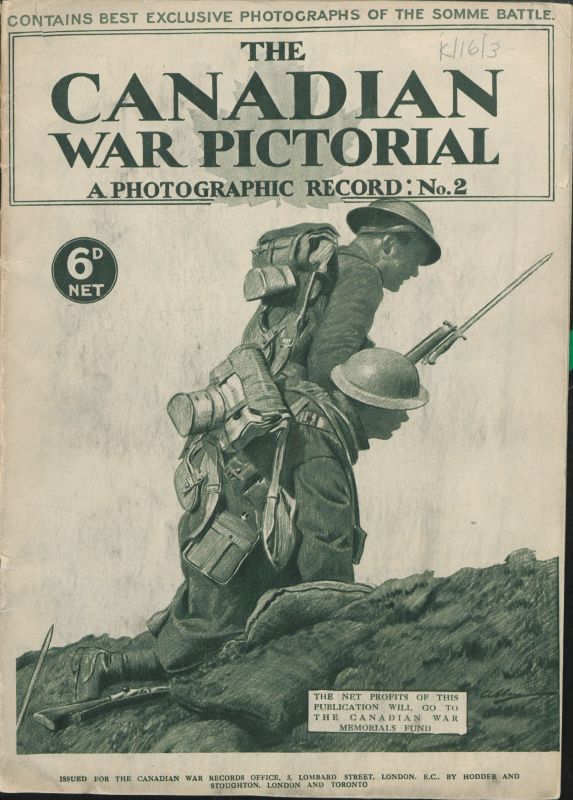Researching Military History in the Canadiana Collections

By: Francesca Brzezicki, Heritage Engagement Officer
November 11 is a day when many of us begin thinking about Canada’s military history, whether we have veterans close to us, or we want to better understand how war has shaped our past.
With millions of pages of digitized historical documents, the Canadiana collections are an excellent place to start researching Canadian military history. Military history collections are some of the most popular collections among our user community, and have been used by historians, by genealogists, and even by surveyors cleaning up former battlefields.
“Bombs Away, a Dutch surveying company that uses historical documents to research possible locations of unexploded ordnance remaining from the Second World War, have contacted us numerous times for research help with the war diary collection on Héritage,” says Percy Miller, CRKN’s Heritage Services Specialist and user support expert. “This has allowed us to make a direct contribution to vital safety work—providing access to digital heritage content makes this possible.”
Wherever you are in your research journey, the Canadiana collections are accessible to users free of charge, thanks to the financial support of CRKN members. Check out our recommendations below for some of the most valuable military history resources in the collections.
Military History in Canadiana

Since Canadiana mostly includes material published over 90 years ago (see our 💡 Tip below for more information), it has a rich collection of First World War publications. Key examples include:
First World War nominal rolls
Nominal rolls are lists of the personnel serving in a military unit at a given time. Canadiana has over 150 nominal rolls, including several interesting examples such as the Field Bakery and Field Butchery personnel of 1915. To find a nominal roll, simply search the name of the unit you are looking for in Canadiana. For more specific results, put the name of the unit in quotation marks: for example, “No. 3 Siege Battery.”
First World War honour rolls
Cities, counties, schools, churches, and businesses published records of their members who died in the war. Canadiana has a number of these honour rolls, such as the Livre d'or des réservistes français du Canada and this Memorial Album, which features photographs of fallen soldiers from London, Ontario. See more honour rolls on Canadiana, or try searching the name of an individual or a unit to see if they’re represented in the collection.
First World War trench newspapers
Canadiana has several examples of trench newspapers, such as The Listening Post and The O.Pip. These publications were written and published by Canadian soldiers to give themselves a voice and bond over shared experiences of war. According to the Canadian War Museum, trench newspapers offered “a ‘safe’ environment for soldiers to reveal their anger and antipathy to their hard life, although these messages were often couched in humourous jokes and puns.”
Local newspapers and popular magazines:
Canadiana also has many newspapers and periodicals covering the war years. Some, like the Canadian War Pictorial, were specific wartime publications. However, a wealth of war coverage can also be found in the local newspapers, magazines, and reports found in Canadiana’s serials sub-collection.
💡Tip: Canadiana is growing! Some of our newspaper collections, such as The Dawn of Tomorrow and The Chinese Times (Chinese language only), include coverage of the Second World War and other twentieth century conflicts. As CRKN continues to expand Canadiana, we will add more recent content to the collection. See our What’s New page to stay on top of the latest additions.
Military History in Héritage
Héritage contains digitized microfilm archival records from Library and Archives Canada (LAC) and is a great place to access primary sources like war diaries, operational records, and correspondence.
If you’re new to Héritage, the military history sub-collection shows you many of the key collections available to be consulted online. We also recommend visiting our Navigating the Collections page to see specific tips for searching in Héritage. In the meantime, browse a few of the most frequently accessed military history collections:

War diaries
War diaries are not personal diaries, but day-by-day records of the activities of a particular military unit. Héritage features dozens of First World War and Second World War diaries that are invaluable for studying details of the movements and daily tasks of military units. For those interested in diaries from the Second World War, our reference guide is available to help you navigate them.
Royal Canadian Air Force Operations Record Books
Another popular war diary collection in Héritage is the Royal Canadian Air Force operations record books, which covers the Second World War years and beyond. In addition to documenting daily operations, LAC notes that the books “provide some documentary evidence of the social life of the unit.”
Courts martial records
Courts martial records document the proceedings and outcomes of military trials. These records are critical primary sources and were recently used to research Canadian 2SLGBTQI+ soldiers in the First World War, as discussed by researcher Sarah Worthman for the Canadian Museum of Human Rights. Héritage includes courts martial records for the First World War and for the Second World War.
War Cabinet Committee, 1938-1945
The records of Canada’s War Cabinet Committee, responsible for decision-making during the Second World War, are a direct look into how the Canadian government responded to the most significant conflict of the twentieth century.
Do you have questions about the military history resources on Canadiana and Héritage? Have you used the Canadiana collections in your military history research? We would love to hear from you. Contact us at info@crkn.ca with your questions, feedback, and stories.
Francesca Brzezicki
Francesca Brzezicki joined CRKN in 2019 and holds a Master's degree in Public History from Carleton University. You can contact her at fbrzezicki@crkn.ca.

